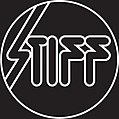Song #405 of 9999
Title: The Rain (Supa Dupa Fly)
Title: The Rain (Supa Dupa Fly)
Artist: Missy Elliott
Year: 1997
Album: Supa Dupa Fly
If you had told me in the late 1980s that rap and hip-hop would still be going strong thirty years later, I probably would have balked at the idea. I won't marginalize it and say it seemed like a fad but I saw more limitations than possibilities. Blame it on lack of imagination but I never imagined the amazingly broad sonic spectrum that would result, let alone the plethora of talented artists who would emerge over four decades (and counting!). Although I have only scarcely involved myself in the world of hip-hop and rap, I can say I was there when it began and it's pretty exciting to observe a burgeoning artistic movement from its infancy.
The problem with the genre (and maybe every genre) is that once you invent a new sound and it becomes your sound, your chances of becoming obsolete increase rapidly. It's not fair really. Only a few artists (Eminem, The Beastie Boys, Jay-Z, maybe Kanye West—the jury's still out) seem to have been able to change the course of the movement and also remain on the track. Others, like Snoop Dogg (yeah, I said it) and Public Enemy, have great influence but when the style changes, they quickly go out of fashion. And thus ends my excessively long exposition to introduce....
....Missy Elliott. I fear that Ms. Elliott's style, for all its novelty and creativity, has come to pass. Her twitchy, staccato delivery with unusually long pauses, bizarre sounds and monosyllabic repetition is extremely entertaining. Her tempos tend to creep and crawl and there's always plenty of hard-handed syncopation in Timbaland's beats to bounce off her double entendres. It's still cool but the lyrics don't hold up—no one says "fly" or "peeps" anymore. But we should all be saying "icky-icky-icky-icky-icky-icky" as often as possible. Maybe we can bring it back.

.jpg)